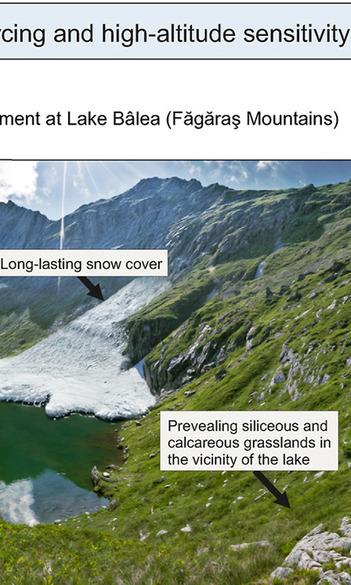Unlocking Past Climate Secrets from a Romanian Mountain Lake

A new study done by several members of our team (including the research leader Dr. Enikő Magyari and first-author of the study Dr. A. Formáčková) was recently published in the Q1-ranked journal Quaternary Science Reviews. Drawing on data from Lake Bâlea, located in Romania’s Southern Carpathians, the study reveals how summer temperatures and ecosystems responded to climate changes over the past 13,000 years.
Using lake sediment cores and insect remains (chironomids), we were able to reconstruct the July air temperatures in past millennia. During the Late Glacial period, around 13,600 years ago, summer temperatures were just 6 °C - rising gradually to about 9.3 °C today. The reconstruction shows temperature fluctuations of up to 3 °C during the Holocene, with distinct cooling phases around 5500 and 4200 years ago. These changes align with shifts in the North Atlantic Jet (NAJ) stream, which seems to plays a key role in shaping European summer weather. A major ecological shift around 2750 years ago altered the chironomid community in the lake, suggesting that changes in lake conditions, such as sediment type and water levels, could also influenced the record, not just temperature.
This study highlights the importance of accounting for local environmental factors when interpreting past climate data. The high-resolution record from Lake Bâlea offers a valuable piece of the puzzle in understanding long-term climate variability in Europe and the role of large-scale atmospheric patterns like the North Atlantic Oscillation (NAO) and the NAJ.
More details can be found in the published paper: https://www.sciencedirect.com/science/article/pii/S0277379125001982

